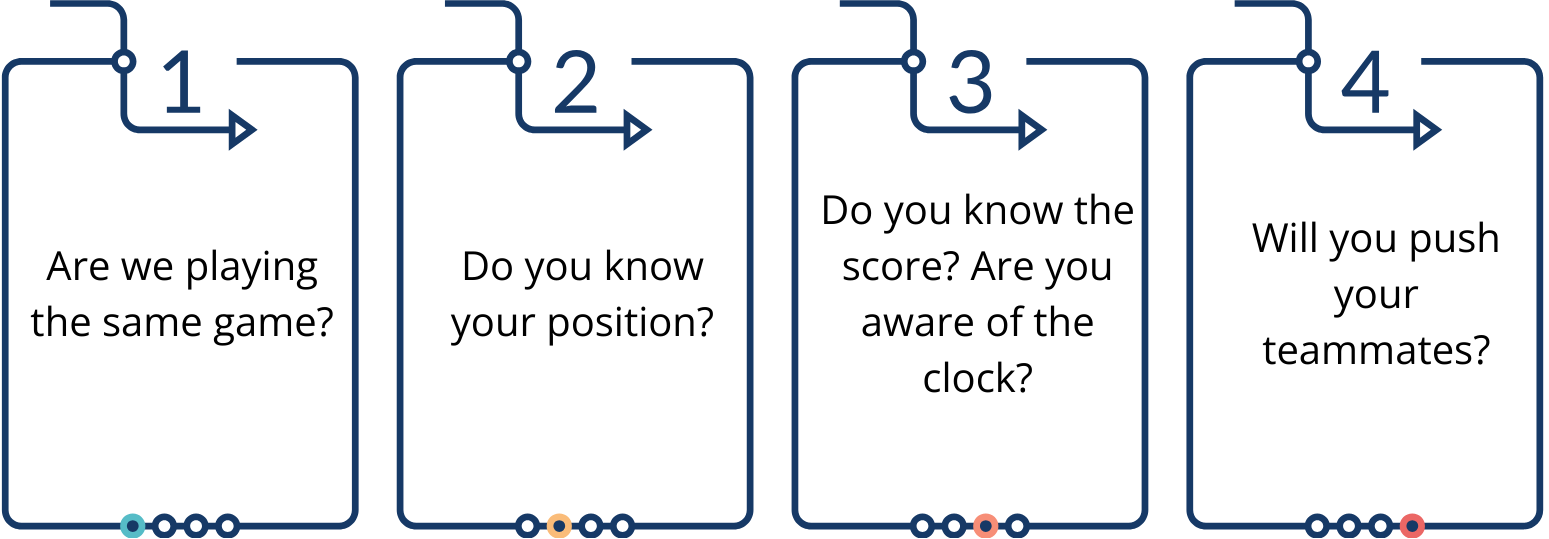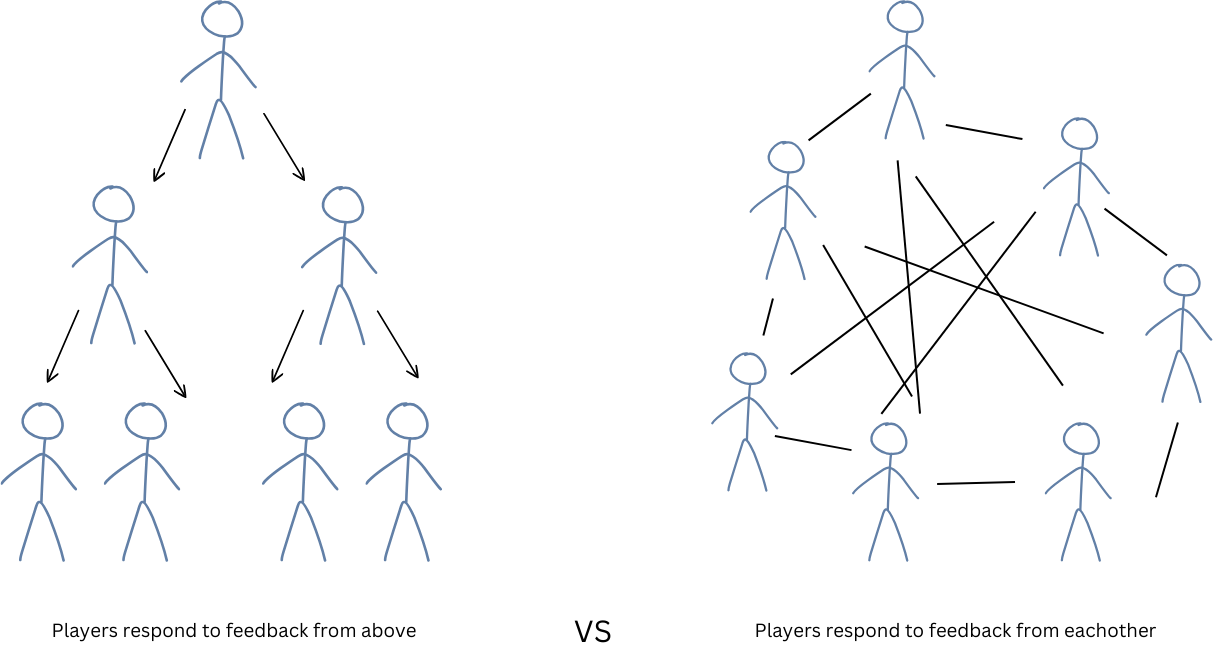Creating a Team
This is AML: Team
By: Robert Haydock, CEO - AML Oceanographic
When you ask AMLers about their colleagues, they say it is ‘the team’ that really makes AML “one of a kind”. AMLers tell us - again and again - how incredibly motivating it is to be part of a team of “top-notch high achievers”.
This is no accident! By now, you know that we only hire “culture fits.” Next, let's look at how we go about molding these individual “culture fits” into a high-performance team.
I love sports analogies. This journey to team focuses on getting the coach off the field and empowering the players to make critical decisions, on their own, in real time. The net result: fluidity and speed, as well as the nimbleness required to take advantage of opportunity.
Business is also a team sport. In a high-performance business, the rules of engagement are almost identical to those of a sports team. We don’t want senior managers on the field, micro-directing the play. Instead, we need players who can successfully tune the game plan on their own. If you can find - and harness - players of this caliber, you are well on your way to creating a business that is able to adapt, pivot, and outpace its competitors.
How did AML get there?
At AML, our recipe starts with recruiting people who share our 3 core values; without this foundation, true teamwork is almost impossible. Once recruited, however, we focus on addressing four key questions:

Let me speak about each of these pieces, in sequence.
Are we playing the same game?
In sports, game rules are clear. Only rarely are players surprised by referees. And yet even in sports - with such clear, explicit rules - the answer to “Are we playing the same game?” is highly nuanced. Even if, nominally, ‘the game’ is soccer, Tuesday night rec soccer is completely different from Premier League soccer. The explicit rules of the game are identical, but the implicit expectations of players on the pitch are oh-so-very different.
In business, it is exponentially less likely that all players are playing the same game. Confusion reigns: the rules are both much more complicated and much less explicit. Most players have a limited understanding of the overall game. To make matters worse, leaders assume the opposite; they assume that their teams do indeed clearly understand the game rules.
Imagine, then, how easy it is for mayhem to break out: every player - salesperson, assembler, shipper, AP clerk, HR manager, CEO, or COO - chasing a different goal and operating with a different set of rules. Are we here for revenue growth? For design excellence? For profit maximization? For customer delight? To advance scientific understanding? For employee happiness? Each of these missions is valid, but each one results in a very different game with very different rules.
The first step in building a high-performance team is to clarify the game, its goals, and its rules. This must be done again and again until there is no room for doubt - by anybody - about how the game should be played. This shared understanding must be explicit and automatic; every employee should be able to verbalize the game and its goals. Back to our sports analogies: it is not enough to ‘sort of know’ or ‘kind of remember’ which net you should score in…
At AML, we use constructs like BHAG (Big Hairy Audacious Goal), 3HAG (Three Year Highly Achievable Goal), and 1HAG (One Year High Achievable Goal) to ensure that our entire team understands the direction of play. We are explicit about our shared passion: “To win at business.” These statements help paint a clear picture of the future; at a high level, they essentially answer the question “What game are we playing? And with what level of intensity?”
I mentioned that our recruitment process focuses on ‘values fits.’ That is true, but incomplete: in truth, our recruitment process searches for candidates who are values fits AND who wish to play our game AND who compete with the same level of intensity that we do. A tall order, but one with magical results…
Do you know your position?
To be an effective team, players need to know which position they are playing, so that they can see - on their own - when they are in and out of step. Not as simple as it may sound... At AML, we’ve been iterating in this space for nigh on ten years, getting better and better at this dark art.
We now use what we call ‘scorecards’ to define the baseline expectations of each role. Think of a job description, but in greater depth, and with a few important differences. Most importantly, most job descriptions are incredibly aspirational; they are frequently built to communicate a perfect, exciting future. Our experience is that this doesn’t work.
Below is a copy of my existing scorecard as CEO: accountabilities, competencies and more.

By creating a scorecard such as this one that identifies baseline expectations, we achieve two things: a clear line that identifies what is insufficient, AND upside room to hit a home run. Who doesn’t want to hit a home run?
In our scorecards, we list the most important accountabilities of each position and then define our expected performance standard with a single supporting phrase: short, clear, and precise.
The intent of this approach is to enable each player to honestly self-assess whether or not they are meeting the team's expectations. Simplicity - and realism - are critical. Driven, self-aware players who can accurately self-assess their performance are worth their weight in gold.
We reinforce these standards by stealing another time-honoured tradition from sport: each player has one individual stat that distills their (daily) contribution to team success. Points, field goals, assists, rebounds: depending on your position at AML, your daily number might be instruments sold, hours scheduled, jobs kitted, sensors manufactured, or orders QC’d. Daily reporting of this stat reinforces each player's understanding of their key contribution and how well they’re doing compared to target.
What happens when we get these scorecards wrong? Take a guess. All hell breaks loose! Back to sports: imagine that you recruit a beefy, bulky powerhouse for your basketball team. They’re used to playing post and winning rebounds under the net. Suddenly they learn that they are expected to nimbly dribble the ball up and down the court over and over and over again. They join the team with false expectations and their performance is reviewed against outcomes they don’t understand and quite possibly cannot achieve. The effects snowball: frustration arises, negativity shows up, and morale plummets.
Do you know the score and the clock?
Have you ever witnessed a sports game where players don’t know the score? Or where they don’t know how much playing time is left in the game?
These two concepts - a score and a clock - are intrinsic parts of team sport. Otherwise, how do you know when to push, to strain harder, or to ease off and save your energy? How can you build a sense of urgency? How do you create context and alignment without these two elements?
Most businesses make the mistake of communicating far too many numbers. As a result, players are overwhelmed; they have so much information that they no longer understand whether the game is being won or lost.
I have committed this sin in spades, communicating financial numbers, widget numbers, performance ratios, and no end of detail, all on a beautifully landscaped dashboard, in a well-intentioned effort to tell the score. I can emphatically say that my entire team was completely lost. They had no idea whether or not we were winning the game. This doesn’t work!
Instead, as leaders, we need to focus on simplifying the scoreboard. We need one simple, digestible, memorable number. And then we need to hold our entire team accountable to knowing that number, accurately, all the time.
At AML, our team’s performance improved dramatically when we narrowed THE SCORE down to one - only one - number that tells us if we’re winning the game. Hint: it’s not profit! We report and discuss this number with every employee, every day, in our huddles. We provide a more detailed analysis of THE SCORE in our weekly all-employee newsletter: where it is, how we’re faring compared to target, and why. We expect our teammates to know this number, constantly and correctly.
Will you push your teammates?
In the business world, most organizations operate with the mindset that everyone has a specific position and that the thing each person must focus on most is the perfection of their play in that position. Furthermore, common practices discourage employees from providing feedback to each other. Feedback is hierarchical. Your role is your role; their role is their role.
Think about that for a moment. It doesn’t make sense.
If you subscribe to the idea that business is a team sport - as I do - then that philosophy lands lacking. A team doesn't win as a collection of perfectly executing individuals. A team wins because individuals provide feedback, communicate, adapt, and collaborate together across positional boundaries. They communicate that feedback constantly. They pivot on the fly, either seizing opportunities or mitigating risks.
That means we’re looking for all players to think, adapt, and strike when opportunity knocks. They must tell other players what they see, argue their corner, and defend their actions…all without taking things personally. On occasion, they must step on toes to make a point. They take risks. They do so because the drive to win outweighs the desire for safety and security. This is key. As leaders, we need to make it as easy as possible to take such risks.

When that kind of communication doesn’t happen, the most likely culprit is a lack of cohesion. Players will share their feedback and debate their opinions only when they trust each other: trust that they share the desire to win the game, trust that they wish to get better, and trust that their desire to win the game will take precedence. Only a cohesive team can respond well to dynamic events.
At AML, we manage this cohesion carefully. It does not come about by accident and it does not come about overnight. Every day, team players are expected to share personal good news, allowing their colleagues to learn - quickly - what makes that person tick. Our daily huddle rhythm accelerates these connections. In our weekly meetings, we use ‘get to know you’ and ‘personal energy rating’ questions to deepen our knowledge of each other.
Eventually, trust builds to the point where we are able to provide constructive feedback to each other in managed settings. For example, we run an exercise where team members provide one piece of positive and one piece of constructive feedback to the colleague sitting beside them in team meetings. Once teams are comfortable with this type of ad-hoc feedback, we take the final step: peer-to-peer, round-robin reviews.
In settings with our entire team - 65 people - we use core value shout-outs between employees to further reinforce connections across departments. What is a core value shout-out? One employee applauds another for a behaviour or action that is in line with our core values. Of note: these are employee-to-employee interactions with no management tuning…
Boom: this is our process for building team cohesion, a necessary ingredient for creating a team of employees that will push each other. We’re after a team where the desire to win is strong enough to overcome the discomfort of providing direct, honest feedback to other players on the pitch.
You may be thinking: this sounds like a lot of work. Too true. It is! Creating a team - a real team - is an investment in time, money, energy, and emotion.
But, if your definition of success includes winning over the long term, it is the only way forward. Rare is the sports franchise that wins over the long term with only one-star player. Equally rare is a scalable, sustainable business without an engaged, committed employee team.











